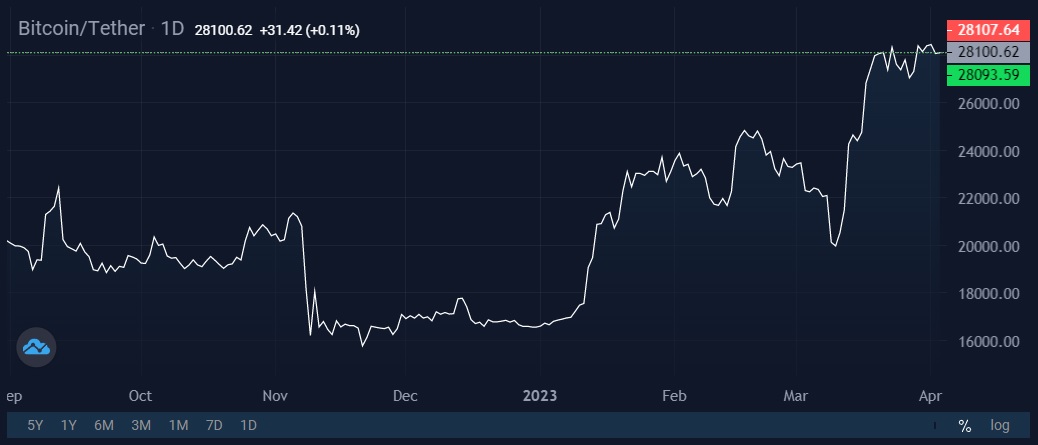The stablecoin market is shrinking. Is it worth keeping your savings in USDT?

The issue of stablecoin solvency came to a head last May with the collapse of the third-largest stablecoin, UST. If the market value of global stablecoin assets at that time was estimated at $162 billion, it has now fallen to $133 billion. This amounts to an 18% drop in one year.
The recent rebound in the cryptocurrency market has not led to an increase in demand for stablecoins.

Firstly, there has been no increase in marketplace trading, leading to a drop in demand for stablecoins. In November, the market was rocked by the collapse of FTX, and now US regulators are taking on Binance. According to The Block, $2.2 billion worth of cryptocurrency was withdrawn from the cryptocurrency exchange on 27-28 March alone. After locking in some profits in March, users reverted to withdrawing Bitcoin from cryptocurrency exchanges to cold storage wallets.

Secondly, the New York State Department of Financial Services (NYDFS) pressured Paxos to cease issuing the Binance stablecoin. On 21 February, Paxos stopped minting new BUSD tokens, and support for the stablecoin will probably be completely discontinued within a year. A month and a half after the NYDFS's action, BUSD's market cap was cut in half to $7.6 billion.
Thirdly, confidence was shaken in USDC, the most reliable stablecoin in terms of regulatory compliance and its reserves. The bankruptcy of SVB, in which Circle (USDC issuer) held part of its reserves, led to the stablecoin losing its peg to the US dollar. On 11 March, the discount exceeded 10%.
By agreeing to the emergency measures, the government rescued SVB's depositors. At the same time, there is still a risk of new bankruptcies, and US Treasury Secretary Janet Yellen announced that there are no plans to provide blanket insurance to all banks. This could lead to new sharp fluctuations in the exchange rate of USDC, whose partner banks include Bank of New York Mellon, Citizens Trust Bank, Customers Bank, New York Community Bank, a division of Flagstar Bank, N.A., Signature Bank, Silicon Valley Bank and Silvergate Bank. The latter three have already gone under.

Some users decided to wait out the hard times in BTC or ETH, with others preferring to stick with USDT for savings. As a result, its share of the stablecoin market exceeded 60%, and its capitalisation jumped to $80 billion.

Tether similarly relies on banks to hold reserves, but unlike Circle, it doesn't disclose partner banks in its audit. This makes it difficult to even approximate the risk of their bankruptcy. In this case, the user agreement states that the company bears no liability in the event of such an outcome.
Tether's management may also soon face new charges from the supervisory authorities. Last year, for example, a US judge requested accounting and financial records for all transactions conducted over the past five years in connection with an investigation into the minting sprees of USDT to pump Bitcoin in 2017.

BDO audit of 08.02.23
The quality of reserves has always been a little questionable, with commercial loans (and other forms of liabilities) issued in USDT by third parties being part of them. In the case of a rapid outflow of funds, the company risks incurring a liquidity crisis, and the USDT would lose its peg to the US dollar.
Given the tightening of crypto regulation and possible lawsuits, the crisis in the banking sector and questions about the quality of reserves to keep money in USDT should be treated with caution.
StormGain Analytical Group
(platform for trading, exchanging and storing cryptocurrency)
Tags
Try our Bitcoin Cloud Miner and get additional crypto rewards based on your trading volume. It's immediately available upon registration.
Try our Bitcoin Cloud Miner and get additional crypto rewards based on your trading volume. It's immediately available upon registration.



